CLICK ON IMAGES FOR LARGER VIEWS
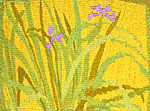 Iris 1: Baseline |
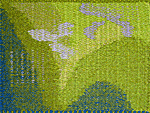 Iris 5: Iris Endures |
|
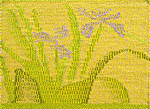 Iris 2: In Full Bloom |
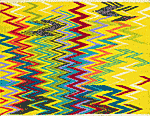 Iris 6: Electric Iris |
|
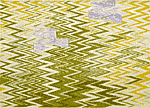 Iris 3: In Green Waters |
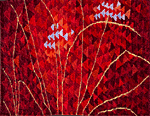 Iris 7: Iris Ghost |
|
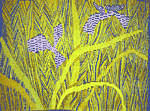 Iris 4: Iris Dances |
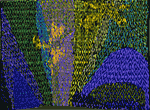 8:Dreams-of-Spring |
Early in the drought year 2014, I realized that what gardening I did would have to be on my loom rather than in my yard. A promising model had appeared in my yard a few years earlier: small clumps of an iris that flourished with or without watering, though only where it chose--some shoots I transplanted into a tidy border soon died.
In spring the plants produce delicate, small blossoms, pale tan shading to pale violet and lasting only a day or two. The leaves actually interested me more, turning and stretching in a seemingly infinite variety of curves. I liked to sketch them.
I discovered this plant is officially named Iris macrosiphon, called less formally, Ground Iris or Evergreen Iris. It is native to Mendocino and surrounding counties. Local Native Americans used fibers from the leaves for such things as nets and snares.
HOME